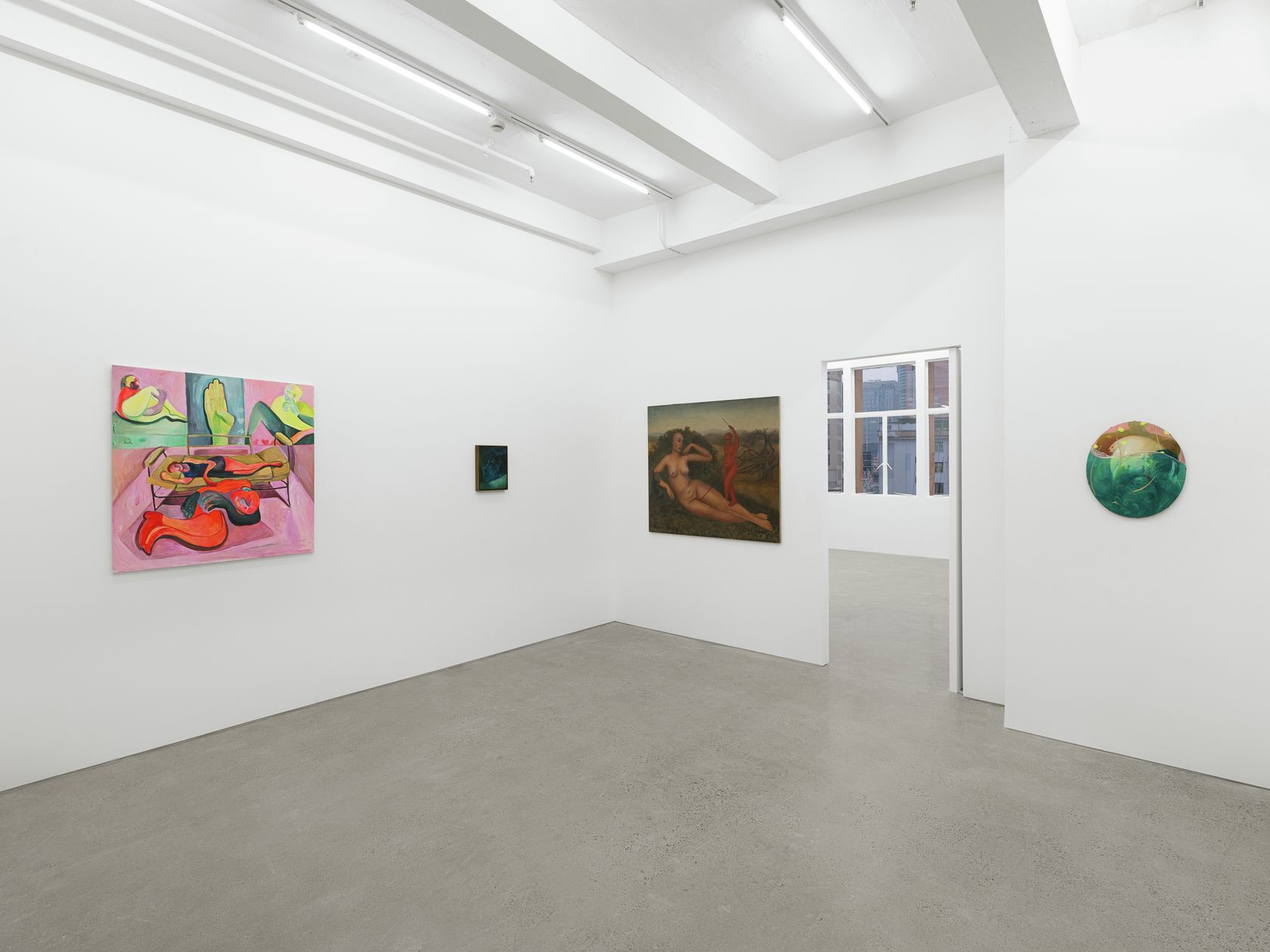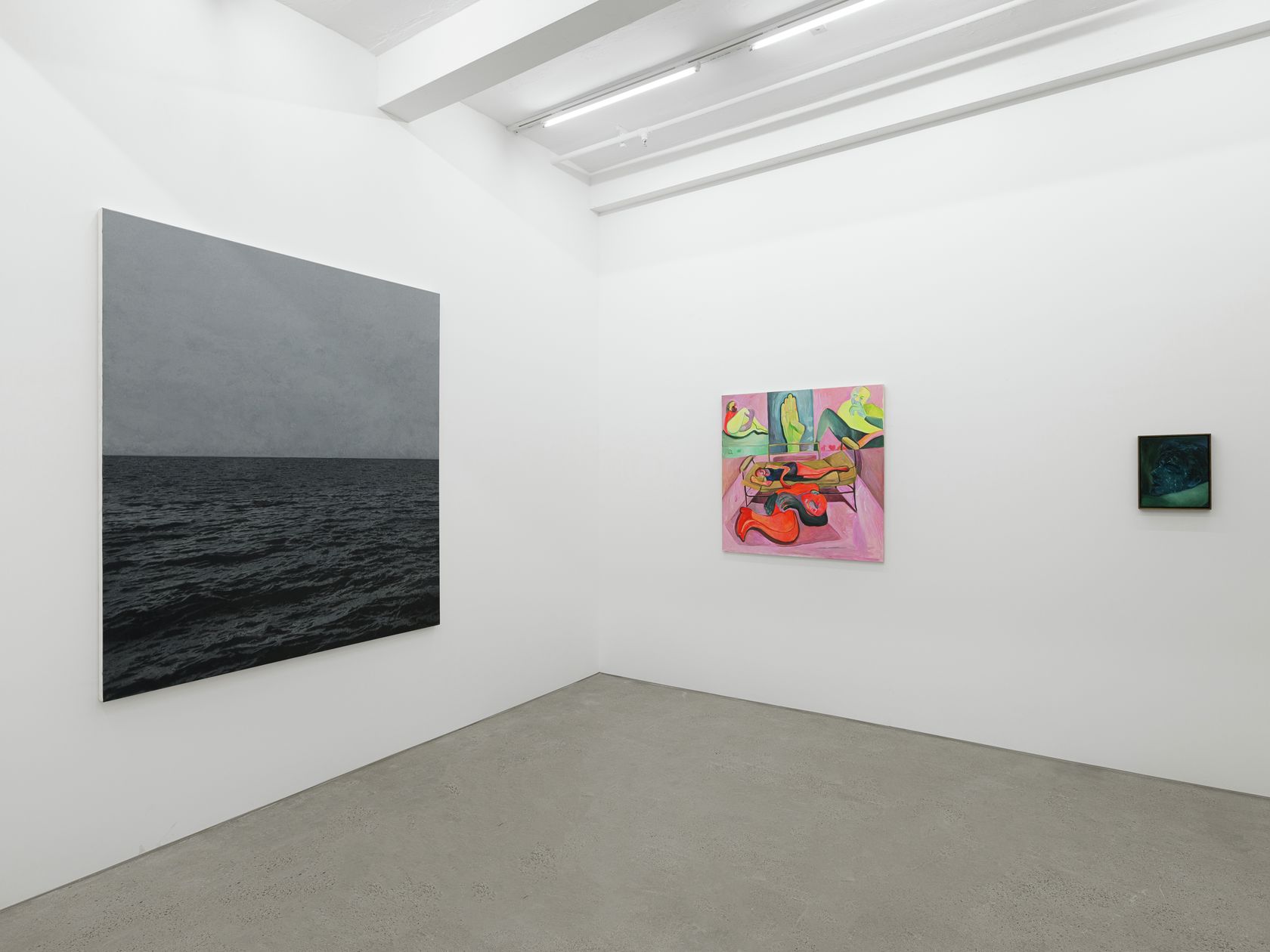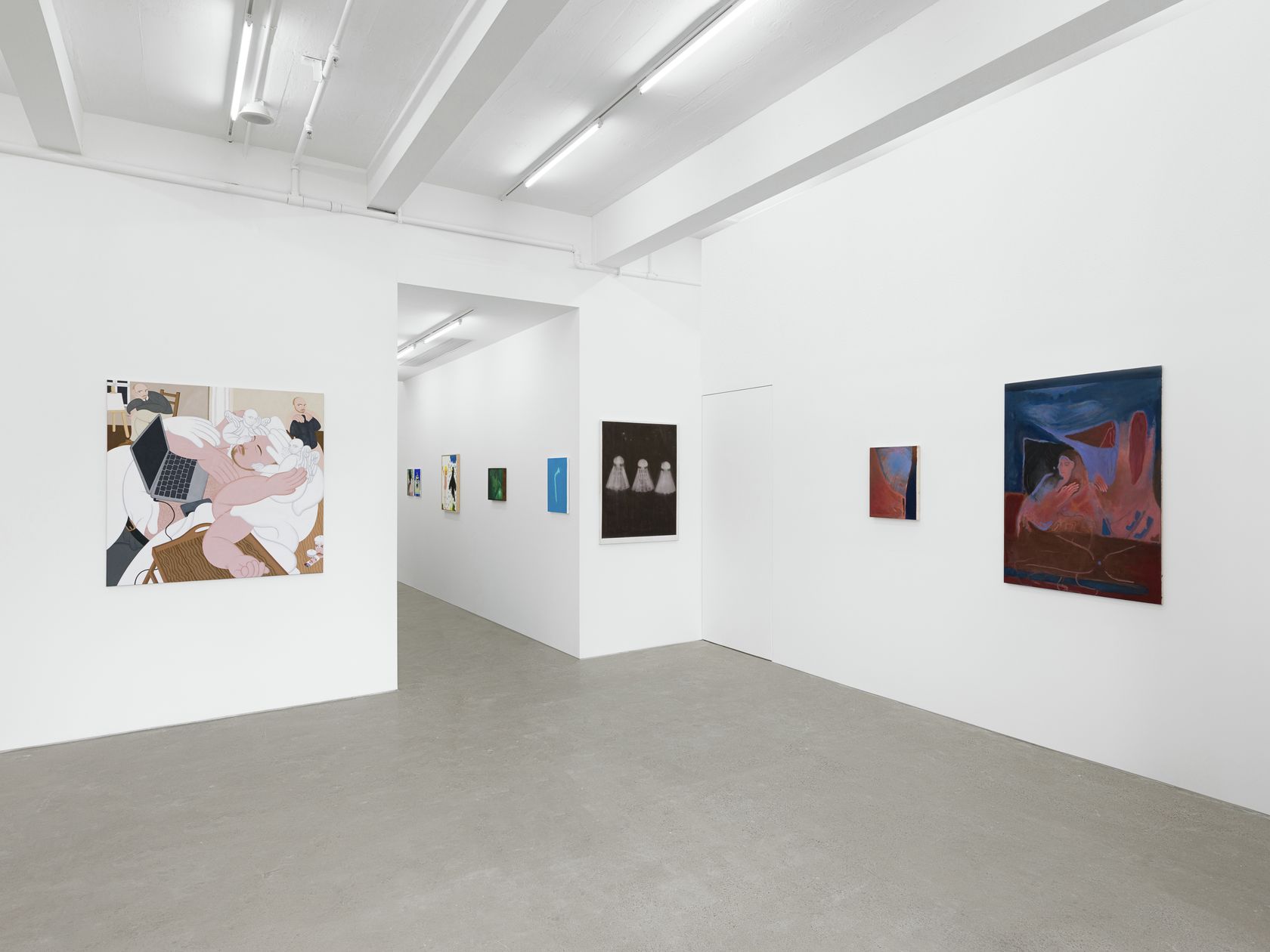-
 1/3
1/3
Xie Lei , RAW
10 décembre 2022 — 14 janvier 2023
Vacancy, Shanghai (CN) -
 2/3
2/3
Xie Lei , RAW
10 décembre 2022 — 14 janvier 2023
Vacancy, Shanghai (CN) -
 3/3
3/3
Xie Lei , RAW
10 décembre 2022 — 14 janvier 2023
Vacancy, Shanghai (CN)
Gallery Vacancy is pleased to announce the group exhibition RAW, organised in collaboration with Daniel Lippitsch, which will be on view from 3rd December 2022 to 14th January 2023.
RAW brings forth a group of 20 painters from a variety of backgrounds and locations whose work stand in stark contrast to the aggressive stimuli that grab at us regularly through our screens. The works in this exhibition act on the viewer as a kaleidoscope of contemporary expression in their cultural as well as political context. Apprehended swiftly, the works shape-shift conceptually, delving into unevaluated or unprocessed ideas reflecting an incohesive dialogue.
With proximity however, they transform. The materiality and narrative of the works becomes visible, the importance of practice is a clear motif as process and concept is made apparent. The elaboration of neo-surrealist tendencies, interpretations of the body in its social environment, concretised sujets of daily life whose inherent qualities are being reduced to its essence, and allegoric interconnections of mediums as well as stylistic expressions are pushing the boundaries of the canonical understanding of painting to shine a light on the ways on how this practice must be viewed within its generational shifts.
Andi Fischer’s translation of mythological archetypes and old master motifs reflect an existential pictorial language that evokes an immediacy of painterly execution untampered by external standards. In a balancing act between humour and seriousness, Fischer’s works demand a re-evaluation of contemporary aesthetics, questioning their often implicit link to legitimate skill and artistic competence. Contrasting to this, the works of Ellen Akimoto Paco König, Simon Modersohn and Robert Schwark evoke a notion of being confronted with reality in a subjugated form. The anonymity of Akimoto’s imagery and titles as being reflected in “Unknowable Vase”, are being confronted with Modersohn’s harsh depictions of suburban existence. The semi-detached houses disappear in a gloomy mist to irritate the perception of the viewer. In the same vein, Robert Schwark dissects the viewers idea of daily objects by portraying blurry screws and shuttlecocks, objects that appear meaningless and crude outside of a domesticated existence. This idea of bleakness and purity finds its peak in the depth of König’s large-scale images deriving from photographs and centring on the glimpse of a moment in time that derives only through its complete decontextualization, creating hypnotic images dissolving in their own anonymity.
A notion of cerebral anonymity is furthermore being explored in the portraits of Rebecca Brodskis and Xi Lei. While the first explores the body as a subject comprised of the many people in one’s life, the second reflects on their connectivity by taking away any direct personal connotation and views the body as an amorph idea taking its logic through its titles “Inside” and “Outside”. The paintings radiate outwards from the body, demonstrating the relational nature of identity.
In contrast to this, Emanuel de Carvalho’s work “Badkamer Show” marks a vulnerable confrontation with the gestural qualities of the body and its identity in a seemingly frozen environment. This transfixing moment of an ambivalent body identity deriving from a focus on the artist persona itself, is then being further developed by Alexander Basil. The concept of seeing and to be seen is a frequent thematic element and the vulnerability within this conveys a heightened sense of exposure, devoid of flattery, in an almost exaggerated unidealistic manner. Finally, the annihilation of any kind of idealisation of the body itself finds its peak in Agata Slowak’s “Born to Make you Happy”, which confronts with its directness, abolishing any notion of comfort in its bleak surrounding and brutality, leaving only a reference to Sacher-Masoch’s “Venus in Furs” open for the interpretation of a transgressive sexual self, limited by social norms.
In the context of Slowak’s fantastical painting, Ani Gurashvili, Kevin Klamminger, Alina Sokolova and Viola Leddi move beyond any physical reality in their paintings. The subjects get blurred and surreal emotions take over these densely loaded works. Gurashvili and Leddi stimulate an impression of seemingly familiar objects, which isolate themselves through their confusion of their inherent purposes, leading into the surreal. Their works are not rooted anymore in the boundaries of the image but rather aim to extend the perception and limitation of the visual field of figurative painting. The abstraction of bodies and promotion of historic and folkloric elements furthermore leads via the works of Sokolova and Klamminger to Nicholas Grafia. All three artist define an underlying fluidity of the bodies and depicted elements within their cultural references. The presence of a current cultural reality within a deconstructed environment then finds further developments with Jack Jubb’s cryptic imagery deriving from random internet searches. Not only the imagery becomes randomised but also its origin; a group of dolphins that could have covered a beach towel and a skeleton from a cheap horror game extend the abstraction of reality and add an additional layer of contemporary folkloric understanding.
In conjunction with this, the subject of abstraction of forms, while being present in the work of several artists in the exhibition, is being vividly displayed by connecting a linguistic approach of idiosyncratic poetry for the contextualisation of personal experiences and sensory impressions in the work of Daisy Parris. Abstraction in the sense of deconstruction of the body itself within successive layers, rapid spattering and the frequent erasures of historic references and perspectives are being challenged by Yi To, Alejandra Moros and Autumn Wallace. Drawing inspiration from cave paintings, Yi To’s archaic visual language opens a pictorial path via Renaissance frescos resulting in an expression that blurs the boundaries between our understanding of art historical references, materiality, and the site specificity of painting as well the connection between abstraction and figuration. Meanwhile, Wallace derives the fluidity of her images from Baroque aesthetics, thus generating a vast spread of layers via the use of a variety of materials, culminating in transparent structures, exploring a unique confrontation of figurative and abstract qualities. Finally, Moro’s fascinating small-scale zoomed-in sujets ignore any kind of historical reference and culminate in a sense of abstraction so that the imagery itself is barely visible anymore. Squeezed fingers, parts of flesh or nails evolve into a microcosm that rarely can be immediately deciphered by the viewer on first glance.
Artists: Ellen Akimoto, Alexander Basil, Rebecca Brodskis, Emanuel de Carvalho, Andi Fischer, Nicholas Grafia, Ani Gurashvili, Jack Jubb, Kevin Klamminger, Paco König, Viola Leddi, Simon Modersohn, Alejandra Moros, Daisy Parris, Agata Slowak, Alina Sokolova, Robert Schwark, Yi To, Autumn Wallace, Xi Lei